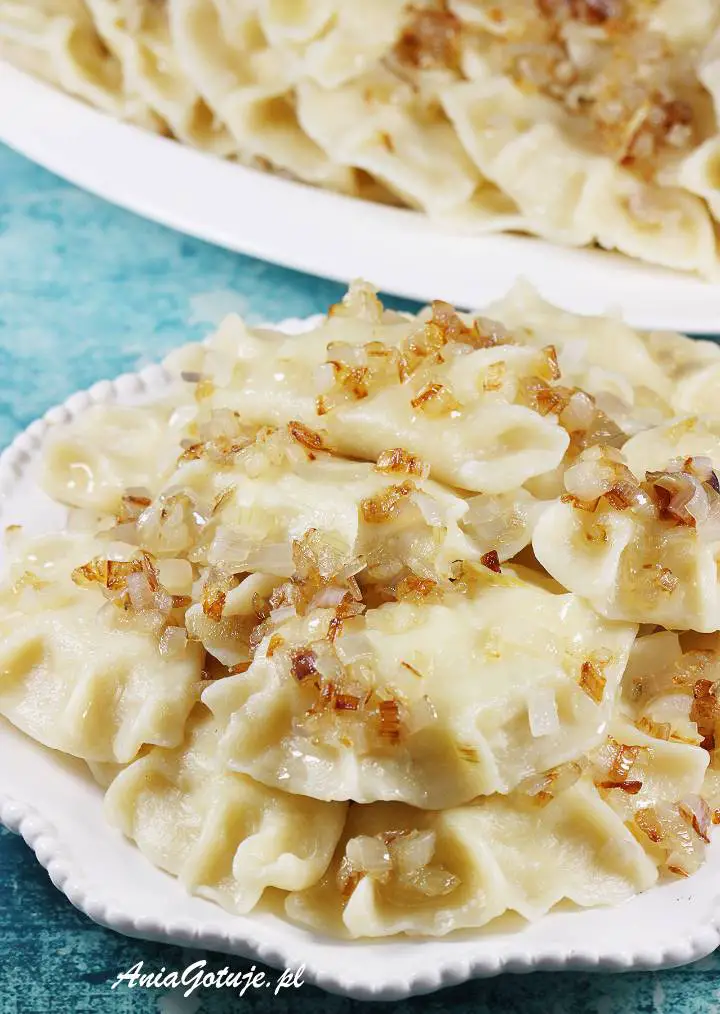See how to prepare the best dough for dumplings. I suggest my all-purpose recipe to anyone searching for a tried-and-true method for creating the ideal dumpling dough. Soft, pliable, and incredibly simple to produce.
An easy dough recipe that pairs nicely with any kind of dumpling
Components
- 500 g of basic flour (such as type 500)
- Half a teaspoon of salt
- One glass of hot water (50 ml), four tablespoons of oil, and 250 ml
Recipe for dumplings
I have 250 milliliters in my glass. You get about fifty to sixty dumplings out of this recipe.
To make the dough for any dumplings, you will also need a wide pot, cotton cloth, a roller, a glass or circular dumpling cutter with a diameter of about 7-9 cm, a clean countertop or kitchen board, and a sieve to fish for dumplings.
The elements I employed served as the foundation for figuring out the calories. This is merely an estimate of the number of calories because the components you use may have different amounts than the ones I used. I measured the calories without taking into consideration the stuffing you chose. I figured that since you received sixty pieces, the calorific value of a “empty” dumpling was provided.
Dough for dumplings
Sift the flour into a large bowl. Add oil (such as rapeseed oil) and salt. Other mild-flavored oils, such as grape seed oil, will also work. Add 250 milliliters of hot, boiled water to the dough and knead it for a bit, ideally by hand. First, you can use a spoon to mix the dough if it’s hot.
Additionally, you may confidently mix the dough in a machine, like a Thermomix. The dough ought to be elastic, soft, and stretchy. After covering the dough ball with plastic wrap, allow it to rest for half an hour. When rolling, the dough won’t get any smaller.
After that, take the dough out of the foil and split it into three portions. Two pieces should be set aside. On a pastry board, thinly roll out one piece. Cut circles with a cutter. Extend every component with your hands. Place the filling (such as Russian dumplings) in the center. Dumplings are folded in half, and the sides are sealed with adhesive. Lay the dumplings on the board, one next to the other. Cover the dumplings with a slightly damp cotton cloth to keep them from drying out.
Put every series into a boiling kettle of salted water. After the dumplings surface, fish them out after three to four minutes. You cook the three types of dumplings as follows.
How to freeze dumplings?
Dumplings can be frozen when they’re still raw, meaning they’re right out of the glue.
After completely draining, gently coat the cooked dumplings with oil. Apply a thin coat of oil to a larger board or tray (the board should be big enough to fit in the freezer). Place the dumplings on top of it, side by side. There should be no contact between the dumplings. After the dumplings have cooled, place the tray in the freezer for ninety minutes. Similarly, you can freeze uncooked dumplings, which no longer require oiling before freezing.
Dumplings can be frozen and placed in freezer bags or cartons. You may already stack these dumplings on top of one another. Put the pouches in the freezer after labeling them. Once you remove them from the freezer, the dumplings made by this method won’t cling together and you’ll be able to remove them piece by piece from the bags or containers.
Simply remove the appropriate number of frozen dumplings from the freezer and drop them into a saucepan of boiling water to consume them later. Cook over low heat until the dough is soft. Take the frozen dumplings out of the freezer and place them on a large platter if you wish to fry them in a skillet. Following a thaw of nature, you can serve after frying when it turns brownish.
Enjoy your meal!


